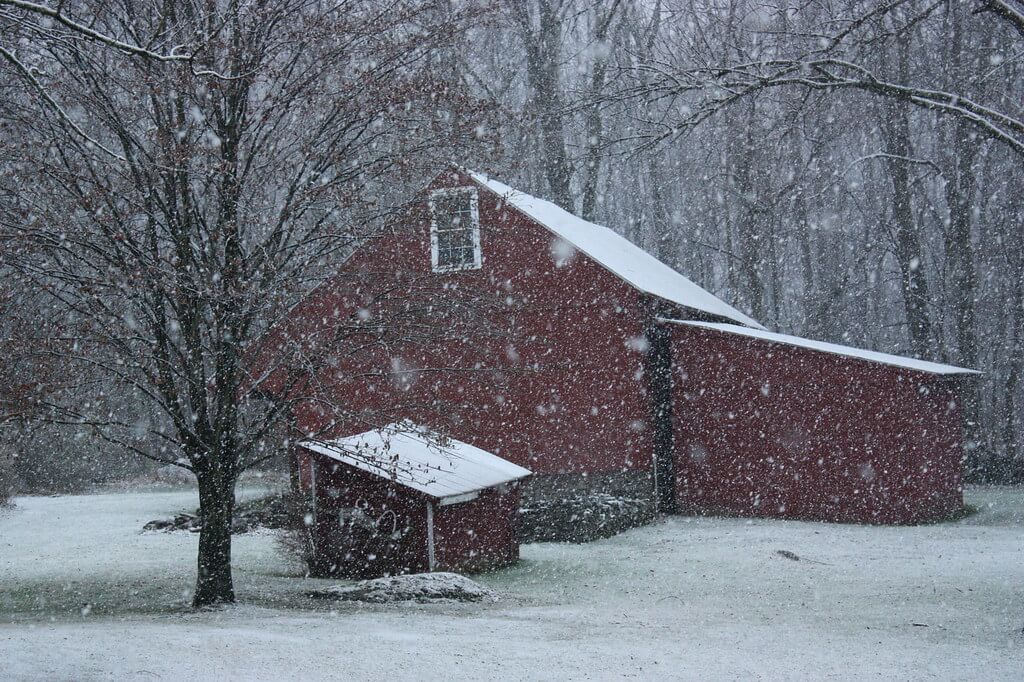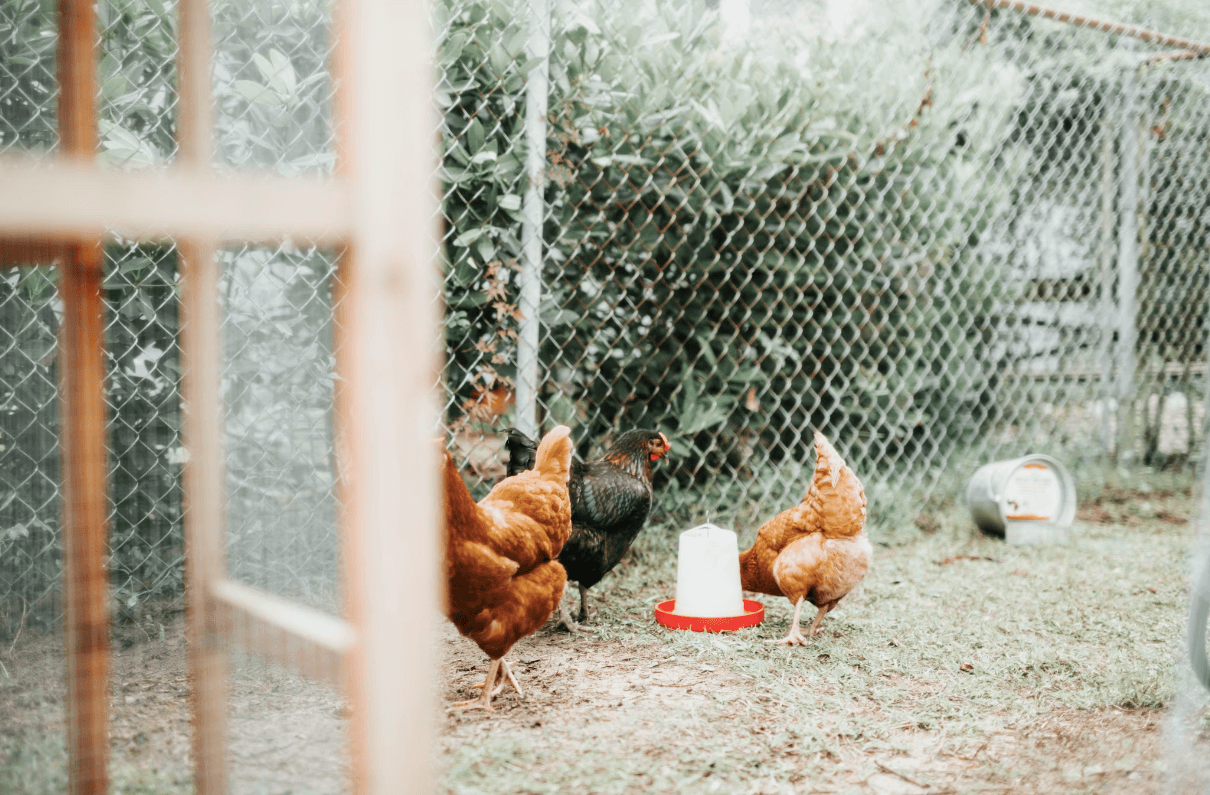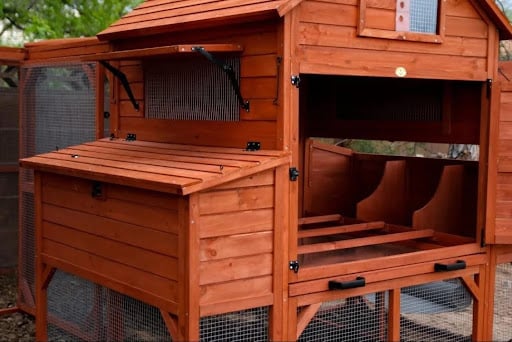Did you know that if your chickens are puffing their feathers, lifting their feet, and huddling together they’re showing signs that they may be too cold? Two words: chicken heater.
Although chickens are way better than humans in withstanding cold temperatures, it may not be the best idea to go with the flow. According to the University of Minnesota Extension, prolonged cold stress can reduce performance in chickens and even lead to death cases.
Yet installing supplemental heating in your chicken coop brings along fire hazards. Any chicken farmer will tell you they’ve seen scenes of chicken coops ablaze all too many times. And like it’s not enough that any electric heat source poses a risk in and of itself, chicken coops are rife with combustible materials (think bedding for starters).
That said, today we tackle the question of how to avoid such dreadful fire scenarios, how to heat a chicken coop safely, and much more, like:
- How do you prevent heat lamp fires?
- How do you keep your chicken coop warm without a heat lamp?
- Whether to heat chicken coop in cold weather or not?
Ready? Let’s dive right in.
Do Chickens Need a Heater?
So, should a chicken coop have a heater? Following the advice given by poultry experts at the University of New Hampshire, this won’t be necessary in most cases. You might be puzzled at the thought that the animals that originate from tropical regions can be cold-hardy—yet chickens are both of these things.
The reason that chickens are pretty resilient to cold comes down to the fluffy inner layer of their down feathers. So, that said, it’s enough to ensure your chicken coop is draft-free and well-constructed, and you’re good to go. That is unless you keep smaller breeds of chickens that are not as resilient to cold and frostbite.
While larger breeds will be fine enduring the winter with as little effort from you as properly insulating your chicken coop, smaller breeds like bantams will require supplemental heating. Other than that, certain breeds will be more cold-hardy than others.
That said, below is a table that lays out cold-weather chicken breeds (alongside those suitable for warmer weather conditions) to help you decide whether your chicken coop needs a chicken heater or not.
Special note: Given that experts advise against using a chicken heater mostly to avoid putting your flock at risk of fire, your prior concern as a chicken keeper is to evaluate and avoid the risks. First things first, read the instructions and warnings carefully before installing a chicken heater. Next, make sure you use exclusively heaters that come with appropriate safety technology, like our chicken coop heating plate that comes with an automatic shut-off mechanism that activates once the temperatures get too high.
So, if you were to decide on a chicken coop heater—lamp or heating plate—it’s best to do it taking all possible precautions. The sections below deal with how to heat a chicken coop safely (with the end goal of keeping your chickens safe from harm).
Tips and Tricks on How to Safely Use a Chicken Heater
1. Choose Safer Heating Source Alternatives
The number one tip on how to safely use a chicken heater is to choose one that is tried and tested in poultry keeping practice as posing less fire danger.
The usual go-to solutions are heat lamps, but the experience confirms they’re way too dangerous to use due to the risk of fire. The lamp assemblies are reported to be knocked over by birds with notorious frequency and the combustible bedding materials in chicken coops don’t help.
So, you might be wondering: How do I keep my chicken coop warm without a heat lamp?
It’s simple, you can look for alternatives to heat lamps such as radiant heat sources. The variety available here in the forms of brooder plates, panels, and hanging heaters allows you even more freedom in choosing the right chicken coop heater for winter.
These chicken coop heaters are an excellent alternative to dangerous 250-watt heat lamps as they allow you to put the safety of your flock front and center.
Here is what makes radiant heat sources the best chicken heaters in regard to safety. They:
- Heat the birds without additionally heating the surrounding air space
- Can be mounted on the ceiling or wall without fire danger and they have zero clearance requirements
- Thanks to their finely adjustable thermostats, they allow for reliable temperature control
Bear in mind, though, that even the safest chicken heater won’t be safe if you’re not handling it properly, which takes us to our next section.
2. Learn How to Use Heating Plates Safely
So, in the previous section, we’ve concluded that radiant heating sources like heating plates are arguably the best chicken heaters for poultry keepers who keep safety their top concern. Below are steps to take to make sure you’re using your heating plates safely to everyone’s advantage—yours and your chickens’.
To keep your chicken coop safe from fire when using a heating plate take special precautions listed below:
- Secure your heating unit well to prevent it from falling with its heating surface enclosed.
- When choosing a chicken heater, choose one that is designed for smaller spaces.
- Keep your heating plate at least 6 inches away from the ground surface, bedding, straw hay, or any other combustible materials.
- Use devices such as Thermo Cube TC3 to automatically regulate the use of your electric heat sources. These are thermostatically controlled devices that are used to turn the power on and off so the temperature in your coop is safely regulated. Alternatively, the chicken coop heater from the Chicken Chicken Coop Company product selection with its inbuilt emergency shut-off switch can keep your birds safe by automatically shutting off if temperatures get dangerously high.
- Maintain proper ventilation in your coop to allow heat to escape and circulate and ultimately prevent overheating and fire hazards.
- Keep a spare power generator for cases of power outages. Having an unexpected blackout can leave your birds highly vulnerable. Namely, sudden drops in temperature due to power outages can be lethal for birds.
3. Exercise Extra Precaution If You Decide On Using Heat Lamps
As mentioned, heat lamps are ill-advised due to too high a risk of fire hazards. Still, if you do decide on using one, it’s best to take extra precautions to do this as safely as possible.
Below are some tips on how to make a heat lamp safe for a chicken coop:
- Always choose heat lamps approved for chicken coops.
- Make sure the wiring is secure.
- Never hang a heat lamp closer than 12 inches to bedding, getting a heat source near dry sawdust and hay is insanely dangerous.
- Never hang a heat lamp by the cord.
- Opt for lamps with an inbuilt cage around the bulb. This can help you avoid the bulb coming into contact with the bedding if the lamp were to fall.
4. Additional Safety Tips to Prevent Chicken Coop Fire Hazards
With chickens more than eager to peck at anything and everything and their tendency to knock things over, some extra tips to avoid fire in your coop can come in handy. Below are some insider tips and precautions to protect your chicks from fire hazards:
- Do not use seed starting mats as bedding for your chicken coop or brooder.
- Inspect the condition of your heating plates religiously to ensure they’re in working order.
- Keep all wires away from poultry, water, and flammable litter to prevent damage, shocks, or fires in your coop.
- Extension cords are not recommended for use in chicken coops except for the short term.
- Make sure to read fire risk warnings painstakingly and follow installation instructions when installing your heat lamps.
When Should You Start Using a Chicken Heater?
You should start using your poultry coop heater once the temperature in your coop dips below 35°F. While heavier standard and dual-purpose breeds will be able to thrive in these temperatures, smaller breeds will require supplemental heat sources. This goes for younger and older chickens as well.
The Bottom Line
Seeing their coop reduced to ashes is the poultry keepers’ worst nightmare. That’s why it helps to know how to use your chicken heater safely and protect your birds from fire hazards.
Sometimes providing proper care to your chickens during cold weather means ensuring good chicken coop ventilation and plenty of natural light in your coop. At other times, it means installing poultry coop heaters in your coop.
Installing safe heating source alternatives to up the temperatures inside your coop will give you the necessary peace of mind—as will the knowledge of doing everything you can to keep your birds safe and sound.
To do this, feel free to visit our article database with tips and tricks from our poultry experts (each week with more to come).
- Brooding 101: How Long Do Chicks Need A Heat Lamp
- Winterizing Chicken Coop: X Super Simple Steps
- Best Way to Water Chickens All Year Round





